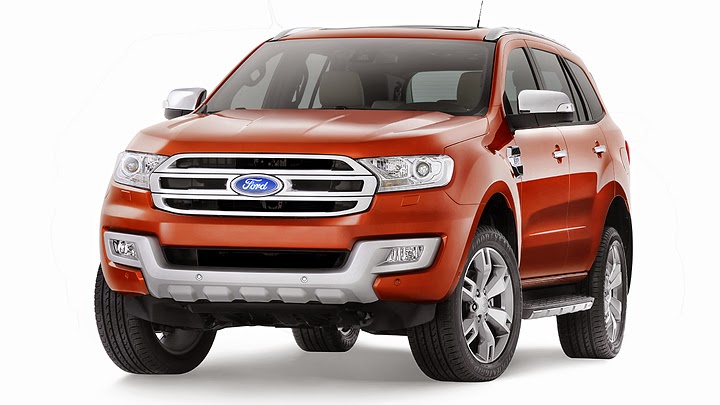
Toyota went through something very similar a couple of years ago. The mid-size pick-up Hilux was always showed side-by-side with an SUV variation, which used to be essentially a closed variation of the same vehicle. However, the successive improvements performed generation after generation ended taking the latter into a superior standard, whether regarding size, comfort, performance or price. 4Runner ended becoming a separate car, with structure and technologies of its own, and therefore aiming at wealthier buyers than Hilux’s. This difference became so evident that some years later Toyota released a second SUV, which was conceived as Hilux’s new direct sibling. Dear reader, what you’re about to meet is Ford’s very own Toyota SW4.
“But Ford already has a lot of SUVs”, one might say. And adding a “sure, most of them are actually crossovers, but Explorer isn’t” shortly after. And this is all true. The thing is, Explorer became increasingly fancier over time just like 4Runner, due to the same goal of satisfying North-American customers. What makes Everest a different vehicle is the fact of having been developed with a much more rational approach. It focuses at people who want luxury and comfort in an SUV, but not badly enough as to give up on its off-road capabilities. The result is a true modern SUV, instead of any sort of crossover. It’ll be offered mostly in emergent countries, and will take advantage of sharing its project with Ranger so as to offer an interesting cost/benefit ratio.





The new Everest starts to attract by its exterior design. Ranger’s lines were enhanced with a more aggressive set of elements, although the pick-up is expected to follow it using a midlife facelift. Headlights and grille look very much like the new Edge’s, while the thick gray lower bar invests in simplicity to look imponent. The sides use the typical SUV silhouette, combined to an ascending waist line in order to dissimulate its length. The rear portion features the same gray bar mentioned before, along with an overall style which results simple and honest. The rear windshield’s shape is contemporary, and the tail lights redirect the attention to the chrome bar which connects them. The low roof racks aid to both a sportier look and better aerodynamics.
Opening the doors reveals no news, but also reminds of the saying which involves that. Everest’s interior features a set of simple and solid lines and volumes displayed with two-tone coating, along with a logotype at the right side. Ford will follow its competitors and offer seven seats, along with an equipment list that could easily be fitted into a sedan such as Mondeo or Taurus: some of the items are digital climate control, multiple airbags, electronic passive-safety systems (adaptive cruise control, blind-spot detection, hill start assist, ESP, lane-departure alert, etc.) and Sync 2. The latter bundles 8” touchscreen, 12 and 240-volt power outlets, multimedia audio, reverse camera, smartphone connectivity and USB ports, among other functions.





However, what will really attract people to Everest lies underneath the cabin. The body-on-frame construction uses rigid-axle suspension, and just the right amount of electronics: locking rear differential, hill control and the Terrain Management system. The latter offers a list of setting modes to suit street, sand, snow and off-road driving, altering functions such as torque vectoring and throttle response. The driver can also rely on digital displays to monitor the vehicle’s pitch and roll. If you want to throw some numbers, Everest features 225 mm of ride height, 3,000-kg of towing capacity, 750-kg cargo capacity (with more 100 kg on the roof), front and rear angles of 29° and 25° and the ability of going through waters up to 800-mm deep.
As far as performance is concerned, there will be three options. Petrol will be burned by the same EcoBoost 2.0L with four cylinders and turbo seen at Fusion. If you prefer to use diesel, the Duratorq TDCi family appears with a four-cylinder 2.2L and a five-cylinder 3.2L, both turbocharged and shared with Ranger. The latter two will always have six speeds, whether with a manual transmission or the automatic box borrowed from F-Series. Ford will start to sell the brand new Everest in Australia, China, India, New Zealand and Southeast Asia early next year, and then wait a couple of months to take it to Sub-Saharan Africa and South Africa. There is no information about pricing yet.